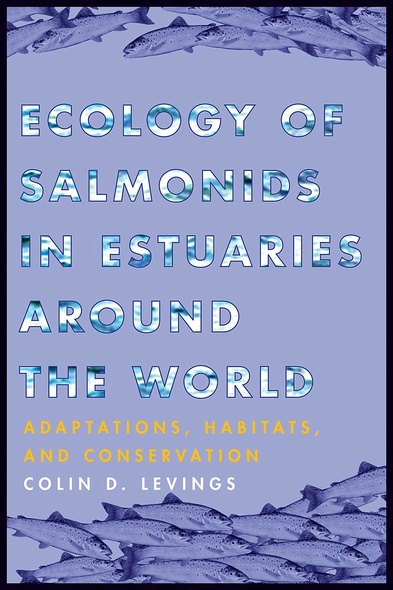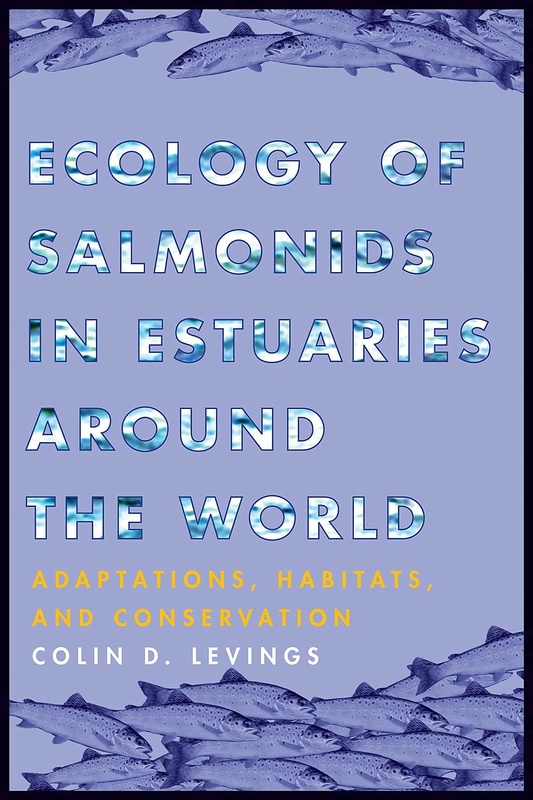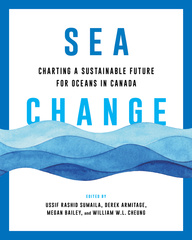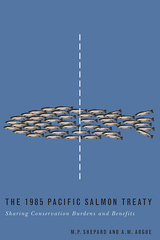Ecology of Salmonids in Estuaries around the World
Adaptations, Habitats, and Conservation
For centuries, biologists have marvelled at how anadromous salmonids – fish that pass from rivers into oceans and back again – survive as they migrate between these two very different environments. Yet, relatively little is understood about what happens to salmonid species (including salmon, steelhead, char, and trout) in the estuaries where they make this transition from fresh to saltwater. This book explains the critical role estuaries play in salmonid survival.
Ecology of Salmonids in Estuaries around the World synthesizes information from a vast array of literature, to
- describe the specific adaptation of eighteen anadromous salmonids in four genera (Hucho, Oncorhynchus, Salmo, and Salvenlinus)
- explain the ecological relationship between anadromous salmonids, the fish they coexist with, and their estuarine habit
- discuss key fitness elements salmonids need for survival, (including those relating to osmoregulation, growth and feeding mechanisms, and biotic interactions)
- provide guidance on how to conduct estuarine sampling and scientific aspects of conservation, management, and recovery plans
- offer directions for future research.
This critical reference book is further enhanced by extensive supplementary appendices that are available to readers online, including data tables, additional references on estuarine salmonids, and a primer on estuaries and salmonids for citizen scientists. Find the materials at http://hdl.handle.net/2429/57062.
This volume is a critical reference for aquatic ecology researchers; salmonid conservation practitioners; specialists in salmonid ecology; and students of fisheries ecology, environmental sciences, and biological oceanography. It will interest anyone practising salmonid conservation and restoration.
Ecology of Salmonids in Estuaries around the World has been sorely needed to complement the syntheses on the freshwater and ocean ecology of salmonids. It is written for a diverse array of users, and I highly recommend it to graduate and undergraduate students, salmonid scientists and managers, citizen scientists (there is a primer in Appendix 3 written especially for this group), and conservationists.
[Levings'] travels and consultation with colleagues enabled [him] to write a book that fills an important gap in the knowledge of estuarine ecology and suitability for the support of salmonid populations. Most large estuaries also serve as harbors for ship traffic and have huge human populations. These factors have affected the fishes to the point where many species have undergone drastic population decreases. This conservation problem is skillfully discussed by the author. In addition to its considerable scientific value, this handsome volume is well written and illustrated. It is a credit to the author and the University of British Columbia Press. Summing Up: Recommended
The book seamlessly transitions from descriptions of the different types of estuaries, based on their morphological composition and specific attributes, to the behaviour of several salmonid species including their interactions with other species within estuarian environments … calling on a lifetime of estuarian studies, Levings details adaptations to field study techniques and strategies, and their limitations, employed in British Columbia and around the world.
… there is much to be learned about both fish ecology and physical oceanography/limnology from this book, which will interest many readers, even those without any specific affinity for salmonids … It is clear that Levings’s long career dedicated to researching estuarine biology contributes greatly to the detail contained within the book … potentially making it an important reference for early career salmonid researchers or others developing research agendas on the topic.
Colin Levings has distilled his vast knowledge from a lifetime of work on estuarine processes and salmonid ecology into a clear, concise and accessible book for a wide audience.
I recommend that those studying estuaries consider purchasing this reasonably priced book. It provides a comprehensive review of what is known about salmonid estuaries, as well as recommendations for future work.
Colin Levings interweaves his vast scientific knowledge with history, and even ancient literature, to present an exceedingly insightful accounting of the estuarine life of salmonids around the world. This superb work will be of value to anyone interested in the ecology and conservation of estuaries. As someone literally and figuratively immersed in the literature, I can attest to Colin’s gift to embrace and synthesize it.
Colin D. Levings is a scientist emeritus at the Department of Fisheries and Oceans’ Centre for Aquaculture and Environmental Research in West Vancouver, British Columbia, and an adjunct faculty member of the Institute for Resources, Environment, and Sustainability at the University of British Columbia. He has published over 200 papers and reports in international journals and report series and has served as an associate editor or editorial advisor for Marine Ecology Progress Series, Canadian Journal of Fisheries and Aquatic Sciences, Estuaries, and Journal of Oceanography (Japan). He has been a member of Canadian fisheries delegations to Russia and Korea; has participated in international exchanges with Norwegian, Korean, and Japanese estuarine scientists; and served as a member of the Marine Environmental Quality Working Group of the North Pacific Marine Science Organization (PICES). He is a founding member and past president of the Pacific Estuarine Research Society, a member of the Coastal and Estuarine Research Federation, and a member of the American Fisheries Society.
Preface
1 Why a Focus on Salmonids in Estuaries?
2 What Salmonids and Estuaries to Consider
3 Salmonid’s-Eye View of the Estuary: Physical, Chemical, and Geological Aspects
4 What Habitats are Used by Salmonids in Estuaries?
5 Global Distribution of Salmonid Species and Local Salmonid Diversity in Estuaries
6 How Have Salmonid Abundance and Distribution Been Assessed in Estuaries?
7 How Do Salmonids Behave in Estuary Habitat?
8 Salmonid Growth in the Estuary
9 Smolting and Osmoregulation
10 Habitat-Based Food Webs Supporting Salmonids in the Natural Estuary
11 Biotic Interactions in the Natural Estuary
12 How Have Habitat and Water Properties Changed for Salmonids in Estuaries?
13 Salmonid Survival in Estuaries
14 Effects of Habitat and Community Change on Fitness Components for Survival in the Disrupted Estuary
15 Harvesting and Production of Salmonids and Other Ecosystem Services Provided by the Estuary
16 Health of Salmonids in Estuaries
17 What Shapes an Estuary for Salmonids?
18 Future Considerations for Conservation of Salmonids in Estuaries
19 Conclusion
Glossary; References; Index







